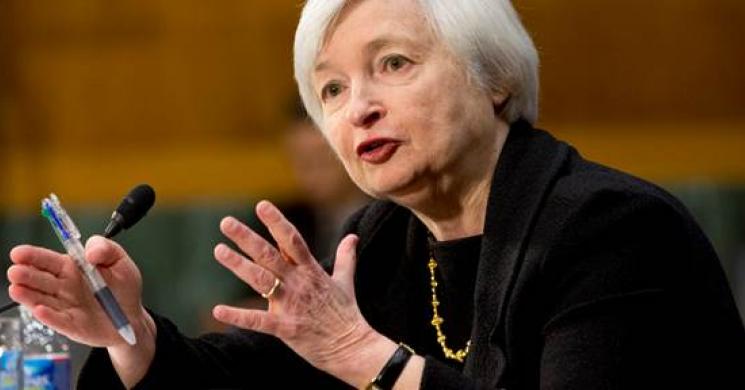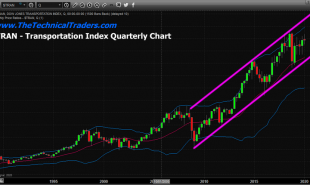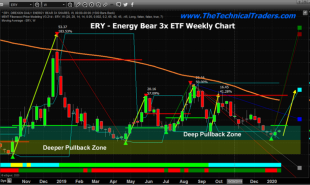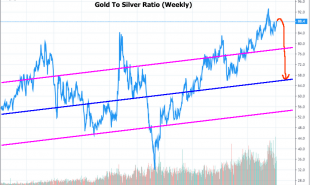
Palisade Radio is brought to you by First Majestic Silver Corp., one of the world’s purest and fastest growing silver mining companies.
Palisade Radio Host, Collin Kettell: Welcome back to another episode of Palisade Radio, and returning on the show with us today is Rick Rule for one of our monthly updates with Sprott. Rick, welcome back to the show. Click to Listen
CEO, Sprott US Holdings, Inc., Rick Rule: Thanks, Collin. It is a pleasure to be with you.
CK: We are recording this interview around three o’clock Eastern Time on Wednesday, Dec 16th, just an hour or so after the historic Fed announcement and DrudgeReport.com has a cheeky headline up “Mother Gives a Quarter,” of course referring to Janet Yellen raising rates by a quarter point. What do you think, Rick?
RR: Well, it is better than nothing. I think it is positive in a lot of ways. We have discussed on your show before, Collin, that these artificially low interest rates have the perverse impact of punishing savers and aiding spenders. People, perhaps your father’s generation, people who worked hard their whole lives, put money in the bank thinking that they get fair rent on their money to survive with dignity in old age have in fact been robbed of their savings by this artificially low interest rates. The interest rate that we are going to endure for the next year is artificially low, too. At least it is a step in the right direction.
I am also interested to see that despite widespread prognostications, strengthening the US interest rate would obliterate the gold trade that the gold market pretty much had 25 basis points baked into the cake. Gold was basically unaffected.
CK: That is very true. I think today has gone by so far without any shocks. The stock market about even maybe up a little bit, the dollar up, and gold is up a little bit but about even. Do you think that a quarter point raise is going to make any effect or are we going to have to see something more substantial down the road?
RR: I think that the 25 basis point interest rate was baked in the cake. It was interesting to see the Fed announced separately that they are hoping to make four subsequent rate rises stick. It will be interesting to see if they can do that. While it is the right thing for the economy, I do not necessarily know that the market will react to it. It will be interesting to see how a hundred basis point increase affects, as an example, long term mortgage rates, and as a consequence of that housing starts, and also consumer finance. As a consequence of that, things like new car sales. It will be interesting to see if they can make four successive interest rates stick. It will be also interesting to see what sort of open market operations take place to the extent that the increase in the interest rate depresses demand for existing bonds by compressing yields.
CK: Great! Rick, our latest interview was very successful by many metrics. We had over 15,000 people view it on our YouTube and website and it was equally as successful in Seeking Alpha. I had a couple listeners ask some good questions that I want to pose to you. One of them asked a question in the comments section about platinum to gold ratio. We just published a piece on Palisade Research titled ‘Is Platinum Cheap or was it Too Expensive Before?’ Our findings were that it is indeed cheap, but it may have been too expensive between ’01 and ’08 where it far outperformed. What do you guys at Sprott think is happening with the platinum price right now?
RR: One that surprised us at Sprott has been the disconnect between the broad economy and markets. Markets, of course, were interest rate driven. What we are seeing really around the world is a lack of demand for everything. The manufacturing slowdown in the United States may be due to a strong dollar. But the truth is on a global basis there is not very much investment in property, plant, and equipment because there is not very much demand for finished products.
If you look as an example at the last quarterly result for Caterpillar tractor, which I regard as the sort of bellwether capital goods maker, it is not that the top line was lower, which it was, or that the bottom line was lower, which it really was dramatically. It was that the backlog evaporated. This lack of demand for all things on a global basis is very tough for platinum and palladium which are tied to industrial processes, refining and chemical processes, and in particular to car sales. Car sales in Western Europe, in emerging markets, and in Japan had been very, very soft. Car sales in the United States are increased, but they are increased at fairly depressed levels. I think that has been the problem with platinum and palladium.
The other thing, of course, that I think allowed platinum prices to fall by more than we had anticipated was the 50% decline in both the ruble and the South African rand relative to the US dollar. So you had a unilateral price reduction or rather cost reduction, pardon me, in the two most important producing countries. They had the good fortune to sell their product in US dollars which was strong while they pay their cost – including their energy costs – in currencies that are depreciated by 50% in nominal terms.
CK: Another intelligent question from a listener is if the market price of these metals— we can take uranium as an example because it is so extreme in terms of the cost of production being higher than what you can sell the metal for, why are not people talking about the possibility of production cost dropping, something that the collapse in oil price has already started. As these metal prices drop, why are we not talking about the cost of getting the gold out of the ground going down at the same time?
RR: Well, you certainly will see the stated cost of production going down because the response of producers to lower costs will be the high grade, which is to say mine better parts of the deposit. As an example, in the gold industry, you are starting to see what they laughingly call “all-in sustaining cost” decline. What that has to do with the fact that they are mining the best parts of their deposit now to stay alive? The truth is that reducing cost in a capital-intensive business like mining is something that takes fairly extensive front-end capital costs and does not pay fruits for a long period of time. You need a dramatic logical breakthrough to lower the cost of producing things.
One example, of course, would have been the conjunction of three-dimensional seismic horizontal drilling and new fracturing techniques which lower the cost of producing newer shales. But we have not seen a similar technological advance as an example in the context of uranium production. Lowering uranium production cost on a global basis will take place only really in the near term as a consequence of high grading existing deposits, which, by the way, raises cost in the out years because your real production cost stay the same while your recovered grade declines.
CK: Okay. I think it is fitting as this is our last interview of the year to do a bit of a review on 2015 and then talk about how 2016 might shape up. The first thing I want to ask you is on the point of capitulation. I was looking at the venture exchange the other day. It is down roughly 40% since July 1st. Just in the last six months of the year the venture has gone from above 700 I believe to about 495. That is pretty dramatic. Is that what you would call capitulation?
RR: Oddly, no. We have seen investor capitulation, particularly retail investor capitulation. We have seen some institutional capitulation complete among generalist institutional investors but not among resource investors. What we haven't not seen is issuer capitulation. You see issuer capitulation when the issuers that need to raise money give up the hope of doing it at higher valuations and price offerings at market clearing terms. In particular, you see the best of the best issuers coming to market to raise enough money to get their near term needs met and fund sustaining capital and GNA for two years. We have not seen any form of issuer capitulation yet I am sorry to say.
CK: What is it going to take for issuer capitulation to hit and will that have an effect on, say, the venture exchange potentially dropping another 40%?
RR: Well, let us take the questions in reverse order. I think with regards to the exchange that the exchange is not a fair representation of the junior market because the exchange widely does not include the 600 or so zombie companies in Canada, companies with negative working capital in the index. I think that the overall performance of the market has been worse than we suggest with a 40% decline. I think the market does not improve until the Darwinian process of eliminating some of the 600 zombie companies has continued apace.
As to issuer capitulation I think we are just starting to see the beginnings of it and it is happening in a way that I had not anticipated. Rather than seeing the juniors, the entrepreneurial companies need capitulation, what we are seeing is capitulation of places like Anglo American which has decided to do a de facto financing by laying off 60% of its labor force and closing about half of its assets. What they have done is they have decided not to sustain operations that are underwater but rather to shut them down. This is a form of capitulation.
It would not surprise me that we saw other forms of capitulation take place through other increasingly important base metals producers. But the next example I think you are going to see that takes the form of issuer capitulation will be wholesale sales of gold and silver streams by base metals producers to the big streaming companies. In other words they are going to do off balance sheet equity financings which bring in much needed cash now at the expense of precious metals revenues and base metals product streams. It would not surprise me if 2016 saw a really surprising number of these transactions. At the top end of the range ten or so billion dollars worth.
CK: Five year trends, I think, are a lot more important than asking what might happen over the next year, so instead I will ask you what is the probability that the bottom is in or will be in before the end of 2016? Are you getting confident, a feeling inside that we have to be near the bottom or is it quite possible to drag on much longer?
RR: My suspicion is in precious metals we are fairly close to the bottom. I believe that the hegemony that the US dollar enjoys and the hegemony that US bonds enjoy on a global basis is a bull market which is approaching its peak and will roll over. I am less optimistic with regards to industrial materials, things like energy-based metals, ferrous metals. I do not see any signs of a broadly based economic recovery in the world. In other words I am seeing no signs of any demand creation in the market which means that the bear market has to be resolved by supply destruction. It has to be resolved by people doing what Anglo American is doing in beginning to shut down productive capacity. Given the amount by which the market was overcapitalized in the bull market which went from 2002 to 2012, I think that the supply destruction scenario could take two years to play out. Not saying it will but it easily could.
CK: Okay and final question. There is a big craze right now around the lithium boom. The juniors in the lithium space are one of the only groups that are performing decently well right now. Some companies have a $50 million market cap with nothing but a staked project and hope of lithium under the ground. Has Sprott made any investment in the space and what do you think, is it another fad like graphite was a couple of years ago?
RR: I absolutely think it is a fad. I think that lithium demand will grow. But lithium supply is incredible. I remember two years ago reading the annual report from SQM, the big Chilean producer, when they describe themselves in terms of having reserves and resources about 180 years of supply and then taking advantage of increases in demand is simply a function of front-ending capital costs. I think that demand for lithium is going to continue to grow, but I think that the big three lithium producers can easily, easily accommodate the increase in demand growth.
I see probably only two or three lithium juniors that are viable. I see them only being viable if they can sell long term supply contracts to people like Tesla who might do that in order to get away from an oligopoly supply situation which is what they are burdened with now.
CK: Okay, well, Rick, thank you so much for coming back on the show. I hope that you and your family have the happy holidays and we will reconnect in January.
RR: A pleasure, Collin. Thank you very much for having smart customers who ask great questions that are fun to answer.
CK: Absolutely! Thanks Rick. RR: Thank you.
Radio Palisade
Read more by MarketSlant Editor







